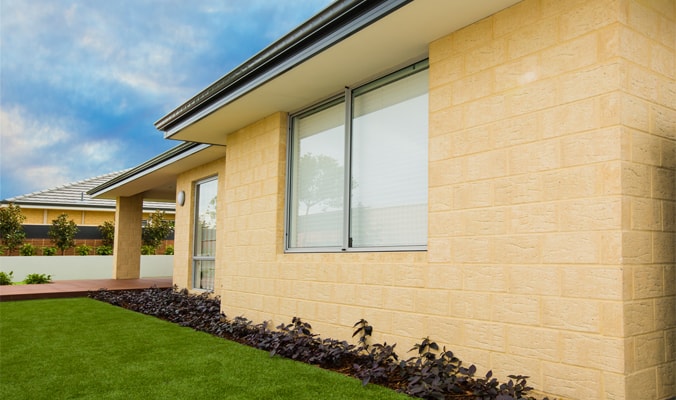Limestone is a great building material that is strong and durable. It is cut into bricks and blocks. There are several differences between the two, including the size.
Limestone bricks
Bricks are the smaller of the two and are coursed so they can be used just like normal bricks. They have a 10mm joints, while blocks are cut to allow 20mm joins. The limestone blocks are cut at the quarry and then transported to the factory for further cutting in bricks.
The bricks come cut in two different ways.
- Firstly, with faces and edges diamond cut, and perpendiculars tungsten cut.
- Or secondly, tungsten cut face and perps, with diamond cut edges.
The geological name of the limestone in the bricks is Tamala Eolianite, and it was formed in the Pleistocene Age. The type of stone is called Coastal Limestone and it has a Calcium Carbonate content of between 70%-95%. Of a cream colour, the compressive strength is 3.5Mpa Avg. Bricks come in 6 different sizes.
Bricks can be used in many projects from planter boxes to garden walls and from wall cladding for single or double storey buildings to even larger commercial buildings. These bricks do not have cement added; they are completely natural limestone.
Limestone blocks
There are two different types of limestone blocks.
- Natural Tamala limestone blocks with quarry cut finishes on all surfaces. These are useful for fences, feature walls, piers and retaining walls. The grain is fine to medium with a compressive strength of 3.5 Mpa. There can be waste if a block splits or breaks which means they are not quite as environmentally friendly as the reconstituted blocks below, however it is still a beautiful product worthy of attention and frequently found enhancing an urban environment with the elegant shape and colour.
